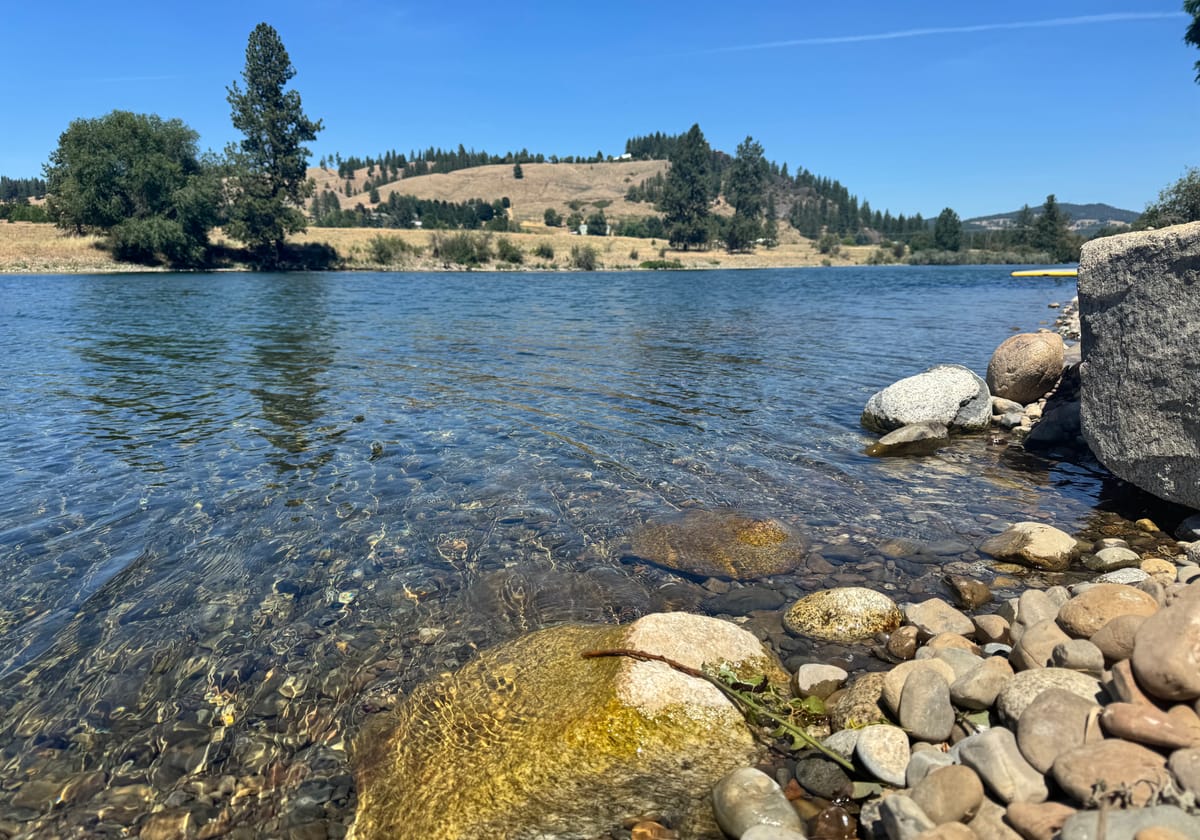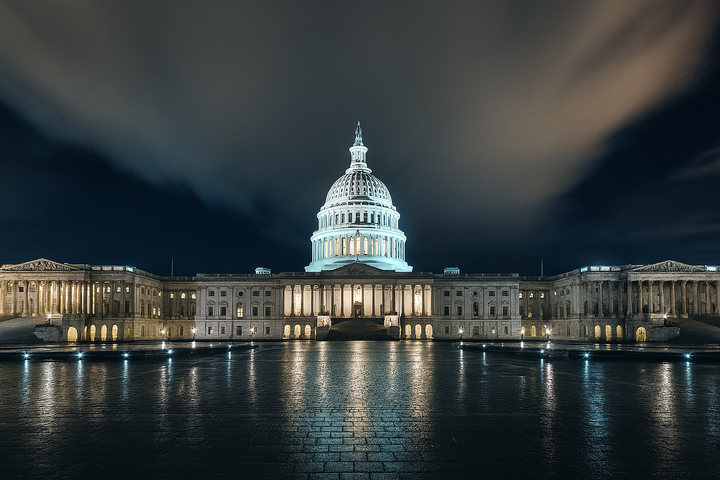Far-Right Policy. Local Waters. One Line of Defense.
PFAS levels 5,000% above normal. EPA partners vanishing. And a river still carrying the burden. As federal enforcement fades, Spokane’s defenders are left fighting upstream — against policy rollbacks, toxic runoff, and a system designed to look away.

The Spokane River cuts west from the silver-blue expanse of Lake Coeur d’Alene, threading its way through forests, basalt canyons, and city parks before emptying into Long Lake, some 111 miles later. Fed by cold tributaries pouring down from the Selkirk Mountains and the Idaho Panhandle, the river doesn’t just move through the region, it shapes it.
It’s a working river, a sacred river, a recreational river. And it’s alive.
Beneath its surface swim rainbow trout, mountain whitefish, and the warm-water surge of smallmouth bass. River otters twist through current-worn channels; beavers build; coyotes stalk the banks; and moose sometimes descend into the floodplains to drink. Overhead, osprey and eagles scan for fish, while Canada geese cut chevrons into the morning fog.
Flanking this living artery is the Centennial Trail, nearly 40 miles of paved path that follows the river’s curves from Idaho into the heart of Spokane. According to Visit Spokane, it draws nearly 2 million people each year: commuters, cyclists, tourists, joggers, families, all pulled by the same thing that draws the herons and the deer. Water.
And while the river feeds the region, it also depends on it. Its clarity, temperature, and chemical health reflect the decisions made not just by anglers and hikers, but by bureaucrats in Washington, DC. Which is why, on a warm July morning in 2024, a different kind of migration arrived at the river’s edge.
Neighbors, Not Spectators
Dozens of volunteers gathered at Downriver Park for a Spokane Riverkeeper Cleanup Walk & Talk. Among the participants were high school students. Others were longtime anglers, or parents pushing strollers, or environmental science majors home for the summer. They came to haul debris from the banks of the Spokane River, but also to learn what was happening to it.
Among them was Sean Visintainer, owner of the Silver Bow Fly Shop, tugging on gloves and chatting with first-time participants as he stooped to collect scattered litter. Around him, kids hoisted bags of trash, while community leaders like Katelyn Scott and Kara Odegard led informal teach-ins on watershed health and sustainability.
By the end of the day, they’d cleared another stretch of riverbank and added to the tally of more than 67,000 pounds of trash removed in 2024 alone.
This is what river protection looks like in Eastern Washington: hands in the dirt, boots in the water, and neighbors side by side. It’s quiet, physical, and persistent. And now, in the summer of 2025, as federal policy begins to shift beneath their feet, it’s also becoming harder than ever to sustain.
The Dismantling Blueprint
The change begins with a dense 920-page document quietly published by the Heritage Foundation and other former Trump administration officials. Known as the Project 2025 Handbook, it reads less like a policy manual and more like a set of demolition plans, with entire sections aimed squarely at dismantling the agencies responsible for enforcing environmental law.
“it is for this reason that conservatives have long believed in either ending law enforcement activities of independent agencies or ending their independent status.” — Project 2025 Handbook, p. 874
Independent commissions, scientific agencies, and regulatory boards, once insulated from political interference, are described not as safeguards but as constitutional violations. The handbook refers to these agencies as “unaccountable and unconstitutional,” calling for their elimination or subordination to presidential authority.
“...it is the President’s agenda that should matter to the departments ..” — Project 2025 Handbook, p. 44
Entire chapters outline how environmental enforcement agencies, especially the EPA, the Council on Environmental Quality, and NOAA, should be stripped of autonomy, merged, defunded, or abolished.
“Adopt policies to prevent abuse of EPA’s ... authority.” — Project 2025 Handbook, p. 425
Oversight, permitting, and environmental review are reimagined not as protections but as obstacles.
From Blueprint to Wrecking Ball
If the Project 2025 Handbook is the blueprint, then H.R. 1 is the wrecking ball. The bill, signed into law on July 4, 2025, slashes billions from federal environmental programs, guts EPA enforcement, and rewrites agency mandates to favor infrastructure over ecology. Enforcement mechanisms are stripped. Grants eliminated. Field staff reassigned. Review processes sidelined.
What H.R. 1 enacts is not fiscal restraint but strategic incapacitation: a severing of science from enforcement, and of local stewards from the legal tools they once relied on.
The Local Betrayal
On March 13, 2025, Rep. Michael Baumgartner applauded the Trump Administration's first attack against the environment, the rollback of the EPA’s Waters of the United States rule. Via press release, he wrote:
“A ditch is not a river, and a puddle is not a lake. For years, the EPA’s overreach has burdened Eastern Washington’s farmers, landowners and small businesses.” — Rep. Michael Baumgartner
But what he endorsed was more than a talking point. It was a direct assault on the legal protections for wetlands, floodplains, and tributaries. In siding with deregulators, Baumgartner helped enact the Project 2025 agenda, and abandoned his own district in the process.
Contamination, Unchecked
Riverkeeper scientists confirmed that biosolids, applied to farmland near the river, were leaching PFAS into the watershed, with concentrations 5,000% above historic baselines. Yet with EPA staff and DOJ partners falling away, investigations collapse, cases are shelved, and field visits are canceled.
Refusal
And still, the work continues. In April 2025, 200 volunteers removed 4,320 pounds of debris from High Bridge Park. Sean Visintainer, soaked to the knees, hauled out a bent bicycle frame. A small girl dropped a soda can into a trash bag.
“This isn’t just cleanup. It’s refusal.”
A refusal to let distant ideologues poison a waterway they’ve never seen. A refusal to wait for permission to defend what’s been entrusted to local hands. A refusal to let environmental dignity be erased without a fight.
“We used to have partners in Washington, D.C. Now we have roadblocks.” — Jerry White Jr., Spokane Riverkeeper Emeritus
Who Speaks for the River?
The Spokane River may not have a vote in Washington, D.C., but it still has defenders. And so, too, does every river, every watershed, every place where policy hits soil and law meets water. The only question that remains is the one every community must answer for itself:
Will we surrender, or will we stand together in defense of the water that binds us?
For more information about the Spokane Riverkeeper, visit:
https://www.spokaneriverkeeper.org/
Spokane Riverkeeper analysis of biosolids in the Spokane River watershed:
PFAS Phase II Results (PDF)
